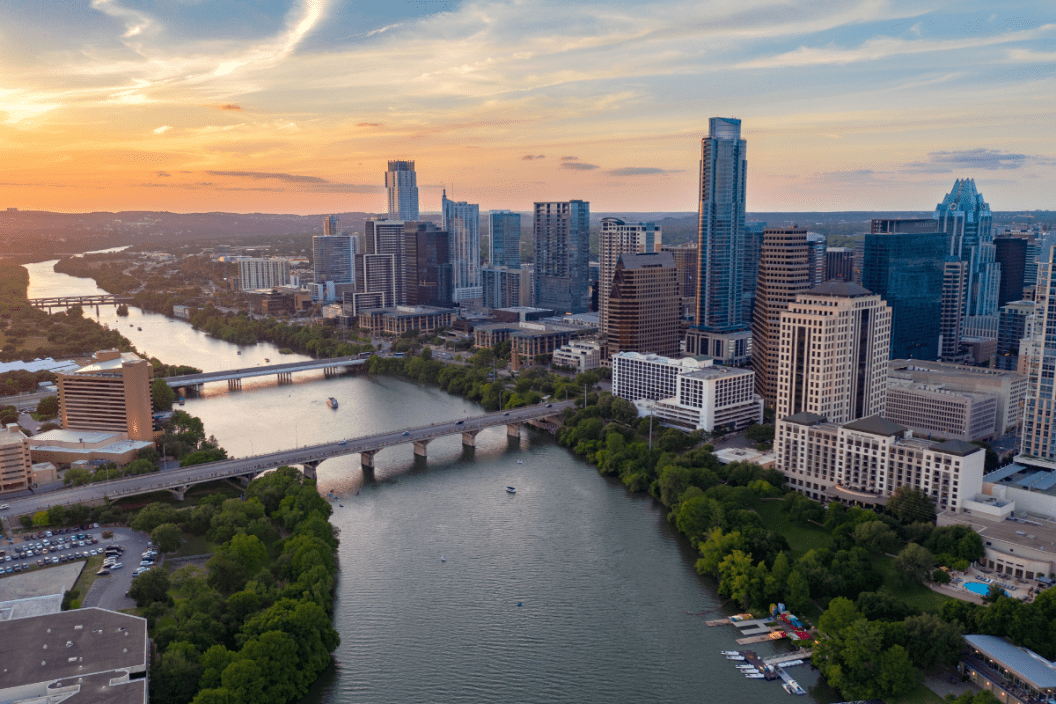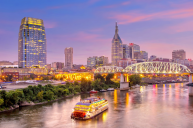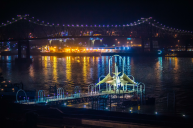Texas: the state where everything is bigger, better (Texans would say), and definitely farther away. The second largest state located in the southern central part of the United States, Texas is a world of its own. A land where smoked meats, football, and God are the best things in the world.
From its time as the Republic of Texas to numerous attempts to secede from the nation, Texas really sticks to its motto: "Don't Mess With Texas." The four largest cities in the state of Texas from most populous to least are Houston, San Antonio, Dallas, and lastly, the state capital city of Austin.
What Is The Capital of Texas?
https://www.instagram.com/p/CN-Pbw6FxOw/?utm_source=ig_web_copy_link
Austin, Texas—the one part of the state that is always keeping it weird. The Texas State Capitol Building lies at the end of the historic Congress Avenue in downtown Austin. Originally called "Waterloo," Austin is a booming mecca of newly-arrived Techies, foodies, and entrepreneurs who have come to the little blue city in a vastly red state in search of breakfast tacos, beautiful people, and live music. Nestled around the Colorado River in Travis County, Austin has become one of the fastest-growing cities in the country.
10 Reasons To Visit Austin, Texas
1. Barton Springs
https://www.instagram.com/p/CMUq1GpMb2A/?utm_source=ig_web_copy_link
No stop to Austin is complete without a dip in Barton Springs Municipal Pool. This natural spring-fed pool stays around a constant 68 degrees, the perfect place to refresh on those 100-degree summer days.
2. Breakfast Tacos
https://www.instagram.com/p/CKfPYWBnG8q/?utm_source=ig_web_copy_link
Austin is an unofficial capital of breakfast tacos — just a taco but for breakfast. Usually filled with bacon, eggs, cheese, potatoes, and onions, these tortilla-wrapped bundles of joy are a staple of the Texas capital city.
3. Barbecue
https://www.instagram.com/p/CMw7shvrRFD/?utm_source=ig_web_copy_link
You could visit Austin and ONLY have time to go on a smoked meat tour. Your stomach may not like you afterwards, but your taste buds will. Nationally recognized meats can be found at Franklin's (just be prepared to wait ALL day). Other contenders for best barbecue include The Saltlick, La Barbecue, Valentina's Tex Mex BBQ, and Black's Barbecue. You really can't go wrong with BBQ in Austin.
4. Live Music Capital of the World
https://www.instagram.com/p/CMu713BHOBP/?utm_source=ig_web_copy_link
Austin holds the unofficial title of "Live Music Capital of the World" and is home to Austin City Limits Music Festival, South By Southwest, and a thriving music scene. Although the city's iconic local music venues took a huge hit during the coronavirus pandemic, you can still pay to see a local band and support the live music scene when you are in town!
5. Sixth Street
https://www.instagram.com/p/CCZegorleLG/?utm_source=ig_web_copy_link
A less intense version of Bourbon Street in New Orleans (the bars close at 2 AM and there's no public consumption of alcohol allowed), Sixth Street is just as famous for nightlife in Austin. Filled with college students, party lovers, and unique bars, the famous Sixth Street is definitely worth drinking a lemon-drop shot for.
6. Museum Hopping
https://www.instagram.com/p/CNxKnD9BMa4/?utm_source=ig_web_copy_link
To learn more about the culture, history, art, and life of Austin, Texas, and Texas in general, head to two of the cities most cherished museums: the Bob Bullock Texas State History Museum and The LBJ Presidential Library.
7. The University of Texas at Austin
https://www.instagram.com/p/CIcF2BoJAjL/?utm_source=ig_web_copy_link
"Hook 'Em Horns!" Austin, Texas, is home to the headquarters of The University of Texas, the Texas Longhorns, and serves as a prided institution of higher learning. Take a campus tour, shop on the famous "Drag" of Guadalupe Street, and visit historical sites around the 40 acres.
8. SoCo
https://www.instagram.com/p/CKXYY_MlR18/?utm_source=ig_web_copy_link
RELATED: Congaree National Park: An Old-Growth Bottomland Hardwood Wonder
The iconic South Congress Avenue (known by locals as "SoCo") features a bustling 10-block strip of local eateries, famous shops, quirky Austin artists, and a stunning view of the State Capitol Building.
9. Lady Bird Johnson Wildflower Center
https://www.instagram.com/p/COQyiDTBixW/?utm_source=ig_web_copy_link
A part of The University of Texas at Austin, The Lady Bird Johnson Wildflower Center offers an arboretum and botanical garden to explore in southwest Austin. Witness over 900 species of native plants and attend one of the center's educational events or programs.
10. The Texas State Capitol
https://www.instagram.com/p/CEbwBqplK7H/?utm_source=ig_web_copy_link
The Texas Capitol Building was added to the National Register of Historic Places in 1970 and designated a National Historic Landmark in 1986. Take a guided or self-guided tour of the famous capitol building while you are visiting Austin.
A Little Texas History
https://www.instagram.com/p/BGKX6UMMPlm/?utm_source=ig_web_copy_link
And now... a very (sort of brief) history of Texas and it's turbulently triumphant past. The land now known as Texas belongs to the Jumanos, Tonkawa, Kónits?...?...íí gokíyaa (Cúelcahén Ndé - Lipan Apache), Coahuiltecan, and N?m?n?? (Comanche) Native tribes. Before we can address Austin, we must take a (somewhat brief) dive into Texas history.
San Felipe de Austin was the first capital for the social, political, and center of the Stephen F. Austin colony until Waterloo (now Austin) became the permanent capital. San Felipe was burned down by residents in 1836 during the Texas Revolution. The former capitals of the Republic of Texas cities include Washington-on-the-Brazos, Harrisburg, Galveston, Velasco, and Columbia.
When Maribeau Lamar heard about the Goliad Massacre and the battle of the Alamo, he rushed back to Velasco to join the revolutionary army at the battle of San Jacinto on April 20, 1836. He became the secretary of war in David G. Burnet's cabinet, and not long after the battle, he was made the major general and commander in chief of the Texas army (to be turned down by the Texan troops).
https://www.instagram.com/p/CN7-GXxAfm4/?utm_source=ig_web_copy_link
The leader of Texas at the time was President Sam Houston, who served as the first and third president of the Republic of Texas. Texas became an independent nation in 1836 when the Texas Declaration of Independence was signed in Washington-on-the-Brazos after the Texas Revolution. Mirabeau B. Lamar became the new president in 1839 when he planned a new city to serve as the seat of government, changing the capital city from Columbia to Austin. The newly formed Republic of Texas was unable to defend itself from Mexican troops and eventually joined the union in 1845.
In its long, tumultuous and detailed history, the state has seen deadly hurricanes in Galveston, raving fires in Bastrop, the deadly Archive War, and many, many triumphs and feats. Visit the Austin History Center to learn even more about this rich history.
Ever visited Austin? Share your favorite memories at our Wide Open Roads Facebook!




